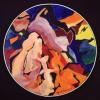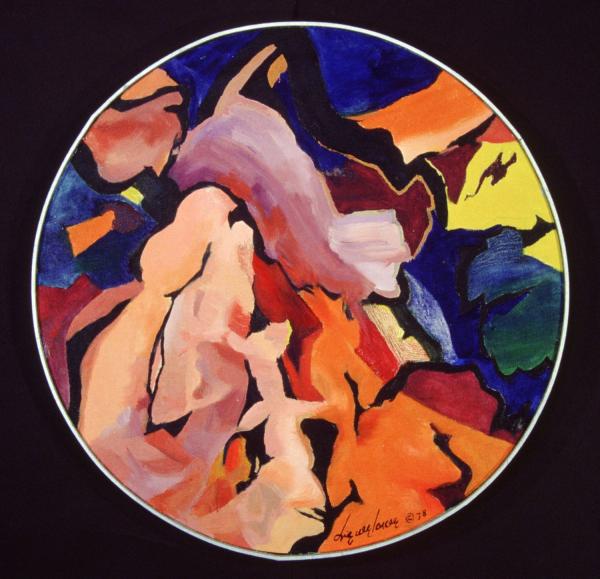Discovering Daylight
| Grade | Kindergarten, 1st Grade, 2nd Grade, 3rd Grade, 4th Grade, 5th Grade | Class | Length of Lesson | Approximately 2 - 3 (40 minute sessions) |
| Lesson Title | Discovering Daylight |
| Unit Title | Creative Surroundings: Eve Drewelowe |
| Unit Compelling Question | What are our surroundings? |
| Historical Context: WHO: Eve Drewelowe WHEN: 1899-1988 WHAT: American Painter FAMOUS FOR: Wide range of bold and vibrant portraits, landscapes, and abstracts. IN HER OWN WORDS: ARTIST'S HISTORY: IOWA CONNECTIONS: ARTIST'S WORK: ARTIST'S WORLD: |
|
| Lesson Supporting Question | |
| Lesson Overview | Students will learn about the life and influence of artist Eve Drewelowe, who was the first woman and student to receive a master's of art degree, and her legacy in Iowa. Using Drewelowe’s artwork, Daybreak, 1978 as inspiration students will paint abstract circle representations of a place and/or time of day. Students will then share their paintings with a peer. |
| Primary Sources Used |
|
| Resources Needed | Other Notable Artworks: A page of my past, 1933 The gold gown, 1940 Daybreak, 1978 Maverick, 1984 Online Resources (Used at Instructor's Discretion) ARTICLE: Eve Drewelowe BOOK: Eve Drewelowe (1988) Tomasini, Wallace, Preface VIDEO: Steve Martin on how to look at abstract art | MoMA BBC | THE WAY I SEE IT VIDEO: Finding meaning in abstraction Materials: Access to internet Print/Copy/On Screen image of artwork Daybreak, 1978 Large, circular paper plates, preferably white Tempera paints Paintbrushes |
| Standard |
|
| Lesson Target | Students will analyze and discuss the artwork and life of artist Eve Drewelowe and her connections to the state of Iowa.;Students will paint abstract representations of a place and/or time of day in a circular format. ;Students will share and discuss artwork with a peer. |
| Lesson Themes | Women's Experience, Visual Arts, Weather |
|
| Formative Assessment (How will you use the formative assessments to monitor and inform instruction?) |
Brainstorm discussion of times of day represented views, and associated colors. |
| Summative Assessment (How does the lesson connect to planned summative assessment(s)?) |
Completed circle paintings and peer sharing. |
| Author | Megan Dehner | Created | Last Edited | ||||
| Reviewer: Teaching Iowa History Team | |||||||
| Lesson Plan Development Notes: Summer Fellowship 2022 | |||||||


